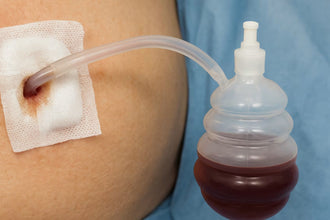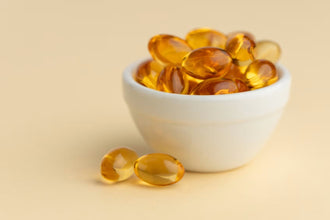The Efficacy of Silicone Scar Cream With Respect to Wear Time
Why Wear Time Matters
Silicone scar cream treatments are only successful if the wearer spends enough time wearing the adhesive gel. The conditions for effective scar management are established by consistent, extended wear.
The longer application periods ensure that the silicone scar removal cream stays in a stable environment for hydration, collagen control, and external protection.
Hydration: A Progressive Process
Silicone creams help to lock moisture into scar tissue, which eventually softens. It hydrates, reducing stiffness and preventing too much collagen from building up. The duration the cream is worn directly affects the consistency and depth of this hydration, however.
- 3–5 Hours: Wear periods of short duration may hydrate the surface of the scar but will not hydrate deeper tissue layers. This could soften the outer layer for a while without long-term improvements.
- 6–10 Hours: Moderate hydration, especially good for less active areas such as the forearm or abdomen, is provided by intermediate wear.
- 12+ Hours: The cream is able to sustain hydration through most of the day because of long-term wear, which keeps scar tissue pliable and reduces the chance of raised scars.
Collagen Regulation: Reducing Overproduction
Collagen production to rebuild tissue is part of scar healing. But overproduction can cause the scars to thicken, like hypertrophic scars or keloids. Silicone scar creams apply gentle, consistent pressure which prevents overproduction of collagen. This effect is enhanced by longer wear periods.
- 2–4 Hours: Collagen modulation with minimal wear time is often insufficient to change scar appearance.
- 8–14 Hours: Collagen production begins to stabilize with moderate wear time and helps to control thickened scar tissue formation.
- 16+ Hours: The application of the patch allows the scar to be flattened and blended with the surrounding skin as long as the patch is applied.
Protection Against External Elements
Silicone creams create a protective barrier that prevents scars from being irritated by external irritants, including UV rays, bacteria, and pollutants. Exposed scars on the face or hands are especially important.
- 1–3 Hours: Some brief application offers protection, but once removed the scar can be vulnerable.
- 6–8 Hours: Offers sufficient shielding for a typical workday or while outdoors, but may need to be reapplied if the setting is difficult (such as hot or humid weather).
- 12–24 Hours: The most reliable protection comes from continuous wear, especially in high-risk environments, such as outdoor activities and dusty work environments.
| Wear Time | Effect on Scar Healing | Recommended Actions |
|---|---|---|
| Less than 6 hours | Minimal hydration and limited occlusion for collagen regulation | Increase application duration for improved results |
| 6-12 hours | Provides moderate hydration and initial collagen regulation | Suitable for individuals with a tight schedule; reapply if needed |
| 12-18 hours | Enhances moisture retention and ensures sufficient protection against environmental factors | Ideal wear time for visible improvements over weeks |
| Over 18 hours | Maximizes occlusive properties, reducing collagen overproduction and improving scar texture | Ensure proper skin hygiene when reapplying for extended wear |
![]()
Customize Wear Time to Accommodate Specific Needs
Chronic Scar Extended Wear
Silicone creams worn 14–20 hours a day for long-standing scars offer the best chance for improvement. These scars need more regular hydration and collagen regulation, and only extended application times can give this.
Sensitive Skin Nighttime Wear
Silicone creams may be worn exclusively at night, for about 8–10 hours, by sensitive skin types. This helps to minimize exposure to environmental factors during the day and to allow the cream to work during the body’s natural repair cycles.
However, keep in mind that silicone creams are extremely hypoallergenic, and for the overwhelming majority of people this will not be a concern.
Extended Wear Time and Long-Term Benefits
Supporting Consistent Healing
It keeps the healing environment steady and uninterrupted by wearing silicone scar cream for long periods. Especially important for scars in areas where collagen control could be disturbed due to movement, such as in joints or facial muscles, this consistency is.
- Short-Term (1–3 Months): For extended wear times (12–16 hours daily), improvements in scar texture and coloration are noticeable. Fresh scars that are still in the active healing phase are most especially so.
- Mid-Term (4–6 Months): Long wear enhances scar flattening and softening and reduces the prominence of new and old scars.
- Long-Term (6+ Months): Silicone cream should be worn most of the day (16–20 hours) for chronic scars to gradually blend the scar into the surrounding skin for the best possible aesthetic result.
Prevention of Scar Thickening
Preventing hypertrophic scars and keloids requires longer wear times, which is especially critical. These types of scars are due to overactive collagen production, which can be caused by a lack of hydration or mechanical tension.
- 12–16 Hours Daily: When worn during peak activity hours, the cream helps to reduce the risk of raised scars by keeping the area continuously hydrated and compressed.
- 16+ Hours Daily: Those who are prone to keloids will get the most collagen control from prolonged wear, which also reduces the likelihood of overgrowth of scar tissue.
| Duration of Use | Observed Benefits | Key Notes for Users |
|---|---|---|
| 1-2 weeks | Initial softening of scar tissue; slight reduction in redness | Maintain consistency to see sustained improvements |
| 3-4 weeks | Noticeable changes in scar texture and reduced itching or dryness | Continue monitoring for early signs of irritation |
| 6-8 weeks | Significant flattening of hypertrophic scars; improved flexibility | Suitable time frame for keloid-prone areas |
| 12+ weeks | Drastic improvements in scar appearance and texture | Required duration for long-term results in stubborn scars |
![]()
Factors Affecting the Effectiveness of Wear Time
Skin Type
How long to wear silicone creams may depend on the different skin types.
- Oily Skin: This can reduce adhesion and requires frequent reapplication. Try to wear for 8–12 hours and clean the skin thoroughly before each application.
- Dry Skin: Silicone creams provide benefits of extended wear (12–20 hours) as they help maintain the essential hydration levels throughout the day.
- Sensitive Skin: It should begin with shorter wear times (4–6 hours) before increasing time as the skin acclimates to avoid irritation.
Scar Location
Where a scar is located plays a large part in how long you should wear it.
- Facial Scars: Must have shorter wear periods (8–12 hours) because they are exposed to environmental factors such as sweat and makeup more often. For consistent results, reapplication may be required.
- Body Scars (e.g., abdomen, thighs): These areas are less exposed to external irritants, so can tolerate longer wear (12–18 hours).
- Joint Scars (e.g., knees, elbows): Enjoy near-continuous wear (16+ hours) to offset the stress of movement.
Lifestyle Considerations
Flexible application schedules may be required for busy lifestyles. For instance:
- Active Days: Apply the cream during inactive periods, such as evenings or while sleeping, to avoid interruption of treatment.
- Work Environments: If you can’t wear the cream during the day, make sure to wear it overnight (8–10 hours) to maintain the benefits.
![]()
Wear Time vs. Skin Health
Extended wear times are essential for the best results, but you don’t want to sacrifice skin health. If used too much without the proper skin hygiene, it can cause clogged pores or irritation. To ensure balanced treatment:
- Remove the cream daily and cleanse the area with a gentle, non-comedogenic cleanser.
- Short intervals between reapplications allow the skin to ‘breathe’.
- Watch for signs of irritation, like redness or itchiness, and adjust wear times.
The efficacy of silicone scar cream is a fine line between wear time, skin type, and lifestyle habits. Knowing these factors and adjusting wear schedules to specific requirements will allow users to have smoother, less noticeable scars, but still healthy skin.
References:
https://pmc.ncbi.nlm.nih.gov/articles/PMC2918339/
https://www.jwmr.org/journal/view.php?number=479
https://pmc.ncbi.nlm.nih.gov/articles/PMC4486716/
https://pubmed.ncbi.nlm.nih.gov/11442615/
General Disclaimer: All information here is for educational purposes only and is not meant to cure, heal, diagnose nor treat. This information must not be used as a replacement for medical advice, nor can the writer take any responsibility for anyone using the information instead of consulting a healthcare professional. All serious disease needs a physician.















